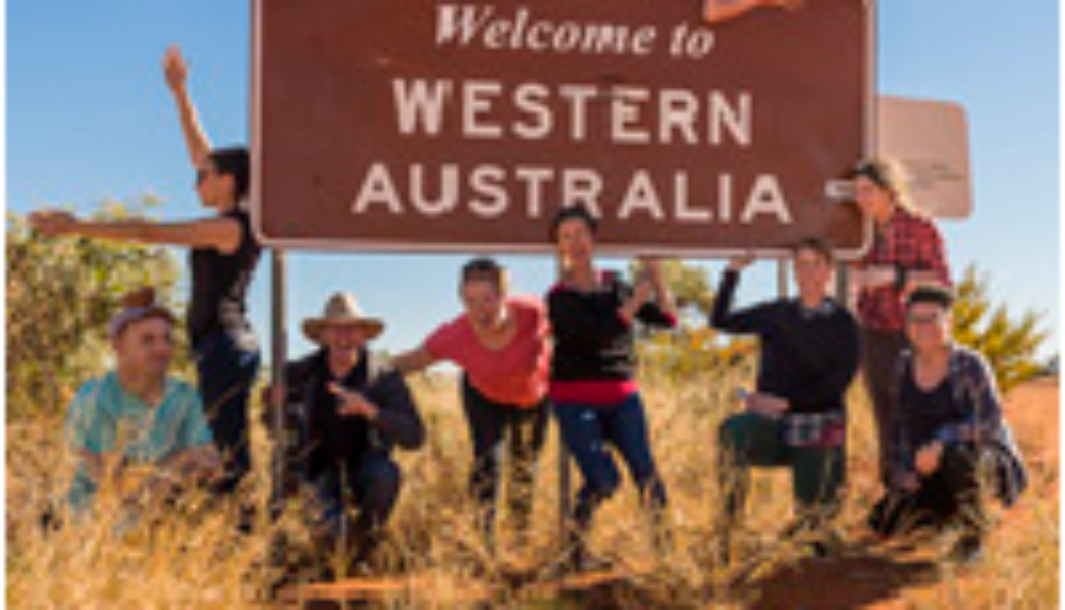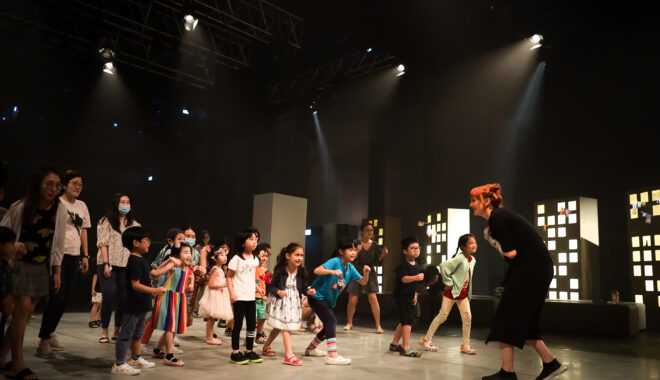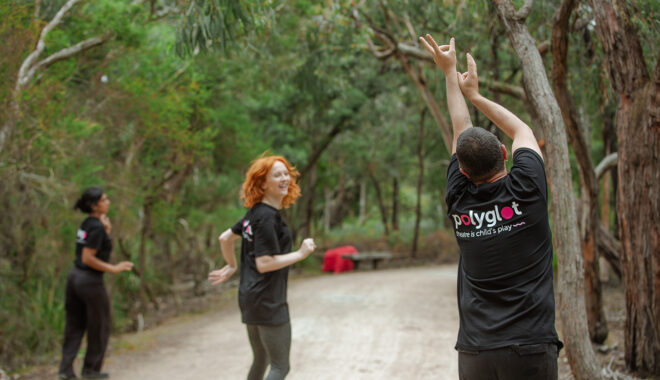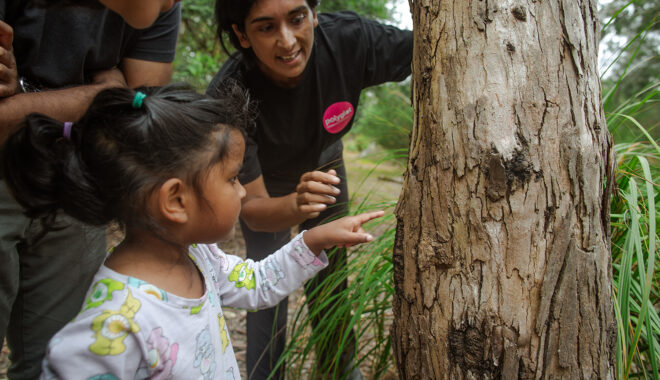17 Aug 2018
Adventures in the desert – our time with the Tjanpi Desert Weavers in Warakurna

Written by Sue Giles, Polyglot Theatre Artistic Director and co-CEO
Picture a map of Australia. Now picture the middle-most spot on the map. This is where Warakurna is – a remote and beautiful place near the border of Western Australia and the Northern Territory in the NPY lands of Indigenous Australia. Four of us Polyglotters, four people from FORM in Perth and one person from NPY Women’s Council, met up at Yulara and travelled in convoy along red dirt roads for five hours west. We juddered over corrugations, stirring up clouds of dust, past haughty camels, wheeling wedgetails and through the beautiful MacDonnell ranges until we reached the small community of Warakurna – our home for the next 13 days. The middle of…everywhere.
It’s hard to draw a quick picture of the time we spent with the Tjanpi artists: Nancy Jackson, Dallas Smythe, Cynthia Burke (CB) and Eunice Porter. We’d set out to build on what we’d started the year before in Melbourne, when the artists came to spend two weeks with us at Polyglot. What we discovered was that every separate part of the puzzle of that first process clicked beautifully and properly into place once we were in country. We had been told that this would happen, but none of us understood really what that meant. Intellectually we knew that things would start to make sense, but we were not prepared for the depth of the emotional journey, the journey in understanding or the power of the relationships ahead of us.
This project (working title In Your hands) was set up by FORM as an interesting potential collaboration between two different artforms – the visual sculptural art of the Tjanpi Desert Weavers and the performative, child-based installations of Polyglot Theatre. In the early days of our first development stage in Melbourne, there were times when we doubted that this was possible. I remember feeling completely lost, and struggling to stay positive when I could feel the project becoming more difficult to grasp. In that first stage we all made mistakes and blundered through, feeling awkward and shy, not wanting to push and yet needing to understand.
On this second stage, in the artists’ own country, on their terms, things did make perfect, solid, real and earthy sense. We were immediately taken out on a camping trip and there the foundation of our project rose gently out of the circles of spinifex. The artists sang and taught us dances, told us stories of the old days, traced their families and gave us skin groups. Sparks flew up into the clear starry sky and the fire lit our circle of faces.
I kept a diary of the whole trip – mostly to make sure that I didn’t miss any of the wealth of detail that went into shaping the ideas. Here’s some of it, written during our first camping trip with the artists:
“We had walked for hours, slow but steady, weaving our way through clumps of spinifex and tjanpi, seeing camel tracks, dingo tracks, hopping mouse tracks, and many tiny birds. Here there are little flocks of budgies – bright green – that fly fast like schools of fish, perfectly synchronised. Back at camp the tjanpi work was still going on and Eunice lay the lizard in the fire to cook. Our Polyglot mob had played at Mamu with the girls while we were away – chasing and making masks and dressing up and scaring. Justin and I had a wild spinifex spear fight with the two girls, sneaking up, ambushing and throwing madly, dying slowly in the dirt, being magicked alive again. Amelia played a trick on us both when we had both died for the last time in the red dirt. There’s a spider! Eeeegh! And we leapt to our feet brushing madly at our clothes and shrieking. She was in fits of laughter and teased us about it for the next hour. CB talked about having a dingo in our work – so that there is a danger moment that gives it drama. We’ve come to three particular areas we want to explore – Danger (dingo), Play in the landscape (tyres and music), and Safety (Wiltja).”
And another excerpt – on Day 10:
“Another beautiful morning. I started to make a list and went, nah I’m going to draw it. I’m thinking in circles now instead of lists. We have four full days left to pull this work together and I have no doubt that we will. The idea is familiar and warm and living in the group and is being stretched and played with by everyone. Additional ideas keep dropping in. Annieka and I have talked to Dallas about potential for having her work on this piece. It would be great to have Ngaanyatjarra women running this work. This would take support and money but would be the best possible outcome.”
And on the last day:
“Everyone who had come to the barbie we held at Tjanpi House drew close, to see the film Claire has put together about our adventures out here and the gorgeous photos from Bewley. From the first camping trip, to working together with the grass, going to Circus Springs, honey ant digging, tjanpi collecting, wiltja building, playing with children – they’d captured magic moment after magic moment. It was very moving to see the artists’ reactions and to be with them all, knowing we’d made something good and strong and connected together.”
- Polyglot Theatre Admin
Rawlinson Range, Ngaanyatjarra-Giles WA







